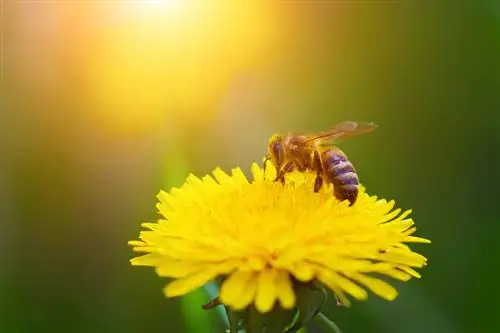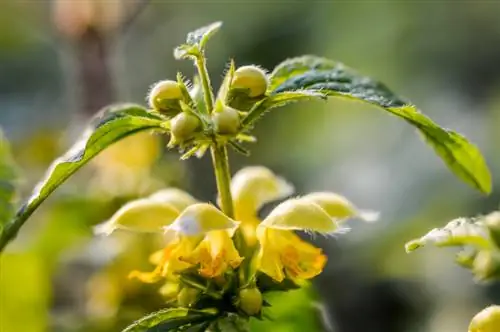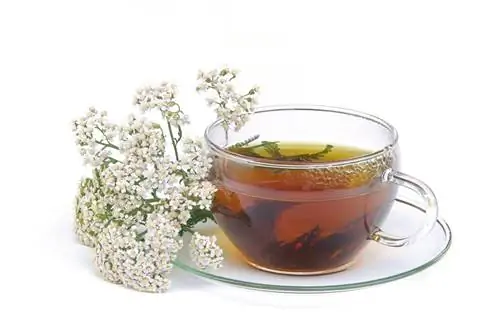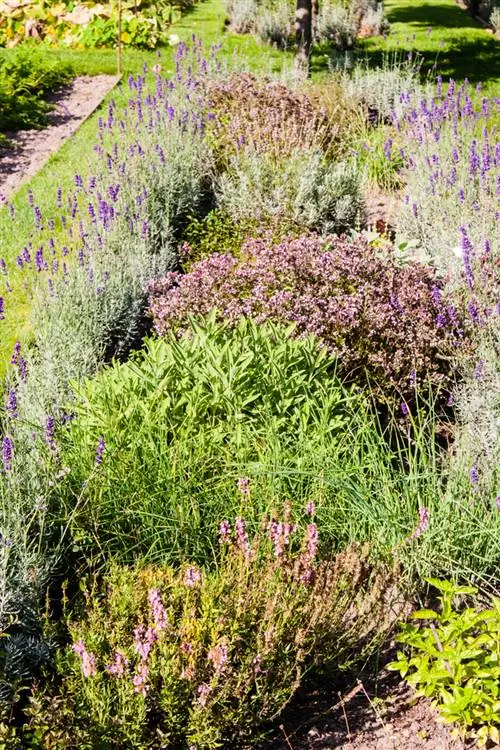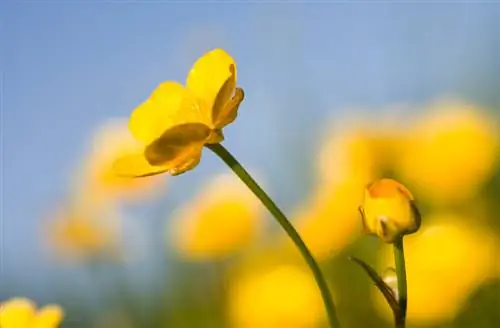- Author admin [email protected].
- Public 2023-12-16 16:46.
- Last modified 2025-06-01 06:02.
Everyone knows the dandelion with its buttery yellow flowers, its characteristic toothed leaves and its hairy seed heads. But is it also the well-known buttercup?

Are dandelions and buttercups the same?
Is the dandelion a buttercup? The dandelion and the hot buttercup are both called buttercups, with the dandelion belonging to the Asteraceae family and the hot buttercup belonging to the buttercup family. Both differ in their characteristics and effects.
Two different plants are called buttercups
When people talk about buttercups, it is not entirely clear whether they mean dandelions or buttercups. Both are also known as buttercups. It is a popular name that is more or less common depending on the region.
The dandelion, which belongs to the Asteraceae plant family, is also known as buttercup, cowflower, dandelion and dandelion. The sharp buttercup belongs to the buttercup family and is very different from the dandelion.
The characteristics of the hot buttercup
The hot buttercup is poisonous to humans and animals. It should not be eaten. Even skin contact can cause symptoms of poisoning on the skin such as redness, blistering and burning.
Here are some of its features; This makes it easy to distinguish it from the dandelion:
- Flowering period: May to July
- Inflorescence: loose panicle
- Individual flowers: 1 to 3 cm wide, flat, wide open, fivefold
- Flower color: golden yellow, greasy and shiny
- Leaves: 3 to 5 parts, basal and stem leaves
Identifying a dandelion - these are the characteristics that define it
These characteristics make the dandelion unique and easily recognizable:
- Growth height: 10 to 50 cm
- Flowering time: end of April to beginning of May, re-blooming in late summer
- Flowers: 3 to 5 cm wide, egg yolk
- Leaves: basal rosette, lanceolate, toothed
- Stem: hollow, filled with white milky juice
- Seed heads: conspicuous silvery-white, radiating, hairy
Dandelions are mainly found in nitrogen-rich meadows, on the edges of paths and forests. Even though it is predominantly considered non-toxic, it also contains a slightly toxic substance. It is taraxacin, an active ingredient contained in milky juice. Nevertheless, dandelion can be helpful against fever, gout, cough, rheumatism, loss of appetite and deficiencies in various minerals and trace elements.
Tip
If you want to take advantage of the healing powers and vital substances of dandelions, only use the young leaves and flowers for consumption! The older leaves are rich in toxic oxalic acid.

